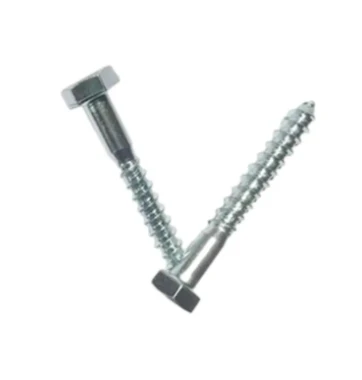নভে. . 27, 2024 17:07 Back to list
Dimensions and Specifications for M16 Anchor Bolt Variations and Applications
Understanding M16 Anchor Bolt Dimensions
Anchor bolts play a crucial role in the structural integrity of buildings and various constructions. Among the various types available, M16 anchor bolts are particularly popular due to their versatility and strength. They are designed to secure structures to concrete foundations, providing stability and support for heavy loads. This article will delve into the dimensions, specifications, and applications of M16 anchor bolts, ensuring a comprehensive understanding of their role in construction.
What is an M16 Anchor Bolt?
The designation M16 refers to a specific bolt size, indicating a nominal diameter of 16 millimeters. The 'M' signifies that the thread profile conforms to the metric system, making it compatible with different metric fasteners. Anchor bolts are used to attach objects or structures to concrete, which is essential for safety and stability, especially in seismic regions or areas with challenging environmental conditions.
Dimensions of M16 Anchor Bolts
The dimensions of M16 anchor bolts are standardized, ensuring consistency and reliability in construction. Here are the critical dimensions typically associated with M16 anchor bolts
1. Diameter The diameter is 16 mm, which makes M16 bolts a significant choice for medium to heavy load applications. 2. Length M16 anchor bolts come in various lengths, depending on the requirements of the application. Common lengths range from 100 mm to 600 mm or more, providing flexibility for different construction needs.
3. Thread Pitch M16 bolts typically have a thread pitch of 2.0 mm. This is the distance between threads and plays a vital role in the bolt's grip strength and load capacity.
4. Head Types M16 anchor bolts may have different head styles, including hex heads, which allow for easy installation using a wrench, or flat heads for flush mounting. The choice of head type often depends on the specific requirements of the project and aesthetic considerations.
5. Embedment Depth The embedment depth, which refers to how deep the bolt is set into the concrete, is critical for load distribution and overall bond strength. Typically, a minimum embedment depth of 100 mm is recommended for M16 bolts, but this can vary based on the load requirements and specific building codes.
Material and Coating
m16 anchor bolt dimensions

M16 anchor bolts are commonly made from high-strength carbon steel or stainless steel, offering excellent tensile and shear strength. The choice of material is based on the environmental conditions the bolts will face. For example, stainless steel bolts are preferred in corrosive environments as they resist rust and degradation better than carbon steel.
Additionally, M16 anchor bolts can be coated with different finishes such as zinc plating or hot-dip galvanizing to enhance the corrosion resistance
. Selecting the right material and coating ensures the longevity and reliability of the bolts in various environmental conditions.Applications
M16 anchor bolts are widely used across various industries, including construction, telecommunications, and manufacturing. Common applications include
- Fixing Machinery M16 bolts are often used to secure machinery and equipment onto concrete bases, ensuring stability during operation.
- Structural Frameworks In building construction, they assist in anchoring steel frameworks, providing essential support for beams and columns.
- Bridges and Overpasses M16 anchor bolts are crucial in bridge construction, securing components and ensuring the structural integrity of the structure.
- Wind Turbines In the energy sector, M16 bolts are utilized to anchor wind turbines, which face significant wind loads throughout their lifespan.
Conclusion
M16 anchor bolts serve as an essential component in construction and engineering applications, ensuring safety and durability in various structures. Understanding their dimensions and specifications is crucial for engineers and construction professionals as they design and execute projects. By selecting the right type of anchor bolt for each application, one can significantly enhance the stability and integrity of the structures being built.


